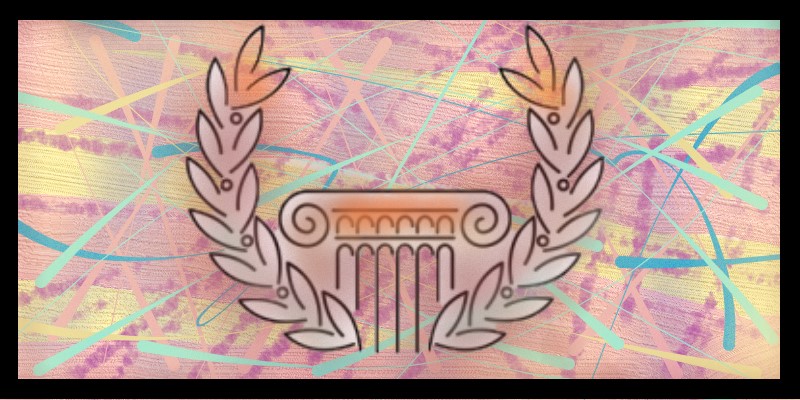Dualism and Art about Greek Mythology

Mythology is defined as a discipline of science that studies all the extraordinary stories about the creation and end of the universe, gods and humans when science was not yet available.
Greek Mythology is defined as mythology, which consists of myths and stories. These stories are about gods, goddesses and heroes. It becomes epic and widespread with oral literature. In this study, 20th century paintings bearing Greek mythology content are evaluated with dualism. Similarly, the philosophy considers the dualism as a field that discusses the source and nature of knowledge.
Paintings and Sculptures in the Framework of Dualism
Eros and Psyche

Figure 1 Edward Munch (1863-1944) Eros and Psyche, 1907
The love heroes of Greek mythology, Eros (love) and Psyche (spirit), are the subject of Edvard Munch (1863-1944). Therefore, the work creates colourful linear touches revealing male and female figures. Eros is famous for his wings in mythology. In this picture, however, it is not visible in his winged form. Thus, we can say that there is no emphasis on physical features in work. The only striking point in the work is the love in the lovers’ eyes.
Hence, with the help of the reflection of love, men and women create the dualism in the painting. According to the story, the lovers who leave when Psyche sees the face of Eros are together after a while. Thus, love becomes the soul’s companion forever. The sadness caused by the separation and the happiness caused by the reunion refers to the dualism fiction in the story.
Hera

Figure 2 Francis Picabia (1879-1953), Hera, 1929
Francis Picabia (1879-1953 )’s painting Hera consists of figures depicts transparently. Three different images and different expressions of emotion create a single work of art. Being both the goddess and Zeus’ wife and Zeus’ sister may explain three different facial expressions. Apart from the Hera images depicted as transparent and translucent, we can say that the male figure seen is Zeus. The naked female body, with its back, turned back, and the hands that give a sense of touch are behind the faces, reflecting inner desires. The use of blue, green, and purple colours adds sadness to the painting.
The masculine-feminine dualism emphasizes the male and female figures forming the theme of the painting. According to the story, the chief god Zeus cheats on his wife Hera many times. Despite this, Hera has managed to remain loyal to her husband. The relationship between loyalty and infidelity between Zeus and Hera proves the existence of dualism. The fact that Hera and Zeus are both brothers and wives is another indicator of dualism.
Prometheus

Figure 3 Jose Clemente Orozco (1883-1949), Prometheus, 1930
The story of the Greek hero Prometheus is the subject of Orozco’s fresco. In this wall-painting, Prometheus reaches for the fire he wants to bring to humanity. Thus, the redness that appears in the place where Prometheus’ hands meet with fire gives the impression of fire, confusion, rebellion, conflict, suffering, and women who are holding their hands together like praying, hugs in the fresco are the other parts of that wall-painting. Additionally, the use of black, ash colour, fire colour, and earth tones play complementary roles in the editing of the work.
According to the story, Zeus deprives the people of fire, but Prometheus gives it back to the people. The forbidden of something is a reference to the dualism of the opposites. The fire given to humanity is both goodness and enlightenment and a curse because fire, which causes enlightenment and goodness, can also cause disasters. Thus, this emphasizes the dualism of good and bad.
The Metamorphosis of Narcisus

Figure 4 Salvador Dali (1904-1989), The Metamorphosis of Narcisus, 1937
The Metamorphosis of Narcissus is the work in which the transformation of the handsome young Narcissus into a daffodil flower is interpreted by Dali (1904-1989). First of all, the table shows a group of people, a statue of a man on a chessboard, and figures of hands. However, the main figures emphasize other objects more prominently, isolating them. The main plot of the work reflects the prominent figures. In the painting, Narcissus kneeling beside a puddle between snowy mountains and rock fragments is depicted with his head resting on his knee.
Narcissus’ twisted image is reminiscent of despair and death. He is unable to get up because his appearance in the water fascinates him. Thus, his own beauty dissolves him. After his death, however, it turns into a narcissus flower. The Narcissus, depicted in front of Narcissus and emerging from an egg held by a stone hand, emphasizes the story. This hand is actually a reflection of Narcissus. Using reality and reflection at the same time creates duality in the picture. The fact that Narcissus comes to life by turning into a narcissus after death is also an indication of the dualism in the mythology.
Pygmalion

Figure 5 Paul Delvaux (1897-1994) , Pygmalion,1939
Pygmalion is a sculptor in Greek mythology. The revival of Galatea he has sculptured is the painting of the painter Delvaux (1897-1994). In this work, the description made in the opposite direction of the story draws attention. According to the myth, Pygmalion, who hates what women do, does not be with them and always waits for the woman he has dreamed of.
According to Pygmalion in the story, while women are bad, according to Delvaux’s (1897-1994) interpretation in his painting, the person to be imagined is men. In other words, the artist has added his own interpretation to the painting by changing the gender. Thus, this reference to the reverse of the story emphasizes dualism. Therefore, a masculine-feminine dualism forms a male sculpture figure, which is the main theme of the painting, and the woman who hugs the sculpture.
Work Cited:
Erbay Aslıtürk, G. Küçükgüney, E. (2016). AN INVESTIGATION ON DUALISM IN 20TH CENTURY PAINTINGS AND SCULPTURES ABOUT GREEK MYTHOLOGY. ulakbilge, 4 (8), p.263-298.
The 10 Scary Painting that interest you and are about mythology;
Teslime Yıldız







